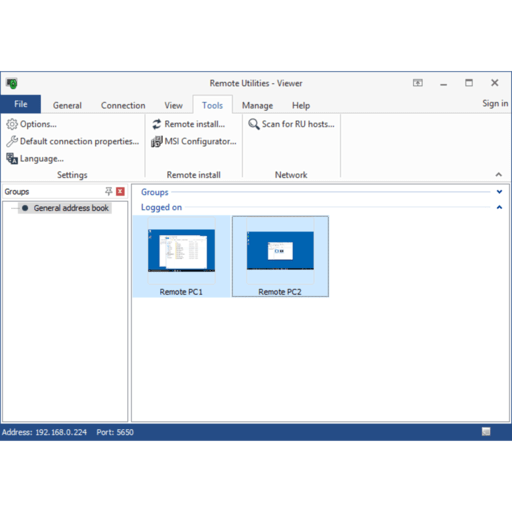
Image quality is crisp and scales well with either of these selections. There’s also a low-bandwidth mode that preserves this responsiveness in marginal networking situations. The desktop experience is only slightly sluggish and much faster than several VNC-based solutions tested side-by-side on similar systems. Remote Utilities Free Edition’s server options reveal its IT roots.Every remote access package has its forte, and Remote Utilities picked a good area in which to excel: speed. Moreover, configuration is straightforward and the Internet ID feature allows connections without opening firewall ports or entering IP addresses, although connection via those more standard means is fully supported as well. Only IT-centered functions such as inventory analysis, built-in mediation servers and automatic integration into an active directory environment are gone from the free version, omissions not likely missed for home use.


Full desktop control, file transfer, chat and even videocam support are all on board along with extras such as a task manager, remote code execution capability and a terminal. Over a dozen features are supported in the personal version of Remote Utilities 5.2.2, including all the relevant ones from the complete commercial package. Security is top-notch, with industry-standard 2048-bit RSA and 256-bit AES keys employed for encryption, and plenty of warnings about password protection during setup. This is ideal for use on a portable USB drive or borrowed workstation for quick access to files or settings that might otherwise be unreachable. The Remote Utilities Free Edition client allows individual settings for each computer you connect with.The Remote Utilities installation package consists of a server application (available for silent remote installation) and a viewer, along with a standalone, portable version of the viewer that doesn’t require installation. That’s quite a perk, given the $30 cover charge for entry otherwise. Since then the feature list has grown considerably, but the biggest change came with the release of 5.2 the current version is now free for personal use.

Remote Utilities has been a player in this market for years, with their first release in 2004 of Remote Office Manager. Given the mission-critical nature they often fill in a workplace, and the length of time they’ve been around, it’s not a surprise that many of these suites are robust, stable, and capable of performing just about any computer task you care to conjure. A staple of home PCs since the era of modems and MS-DOS, remote desktop control programs allow a user to take direct control over a system without being physically present. Some office IT utilities make the transition to home use without skipping a beat.


 0 kommentar(er)
0 kommentar(er)
